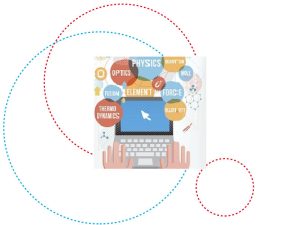Molecular machines are the smallest machines ever built by mankind and such outstanding result has been sealed by the 2016 Nobel prize in Chemistry. But how do such machines really work?
Thermodynamics can help us explain it. As you may already know, thermodynamics is the theory explaining how macroscopic machines work. For instance, it tells with what efficiency fuel is converted into motion by the engine of a car. However, the molecular world is far more different from the macroscopic one as the molecules continuously giggle around due to thermal fluctuations. What you may not know is that at the University we have a research group which is leader in developing thermodynamics for the molecular scale.
In the past few years, they have worked in close collaboration with another group from the University of Manchester, leader in the synthesis of molecular motors, in order to provide a detailed explanation of how chemical energy is being used to produce an information flow that sets a molecular motor made of two concatenated molecular rings in motion. Their results have been remarkable and have been published in Nature Chemistry. “There are two ways to make something moving along a certain direction: either you push in that direction, or you actively discourage movements along other directions, like shepherd dogs with sheep” — explains Professor Massimiliano Esposito, one of the authors of the paper, and continues — “the second strategy works well when the things you want to control already move, like molecules in solution, but it requires to constantly acquire information on how they move (in the example of shepherd dogs, they need to monitor if the sheep are spreading too much). Crucially, with our theory we are able to quantify the energetic cost of biasing the otherwise random motion of a ring relative to the other in the molecular motor, and to understand how to do it more efficiently”.
The theory developed to do so can be used to guide the synthesis of novel molecular motors operating more efficiently. “One very special thing about this work is that physicists and chemists really tried to understand each other“ comments Emanuele Penocchio, a PhD student from Uni.lu who contributed to this work. “There are many ‘languages’ (physics, chemistry etc.) to describe a molecular motor, but it is pretty rare to find ‘translations’ among them and one often struggles to compare results from different fields.
In our work, we drew significant connections between different descriptions, aiding the translation of concepts and relationships between energy, information, chemical kinetics and molecular design. In a sense, writing this paper was like chiseling a Rosetta Stone for scientists interested in molecular machines!”
Full journal page available here
